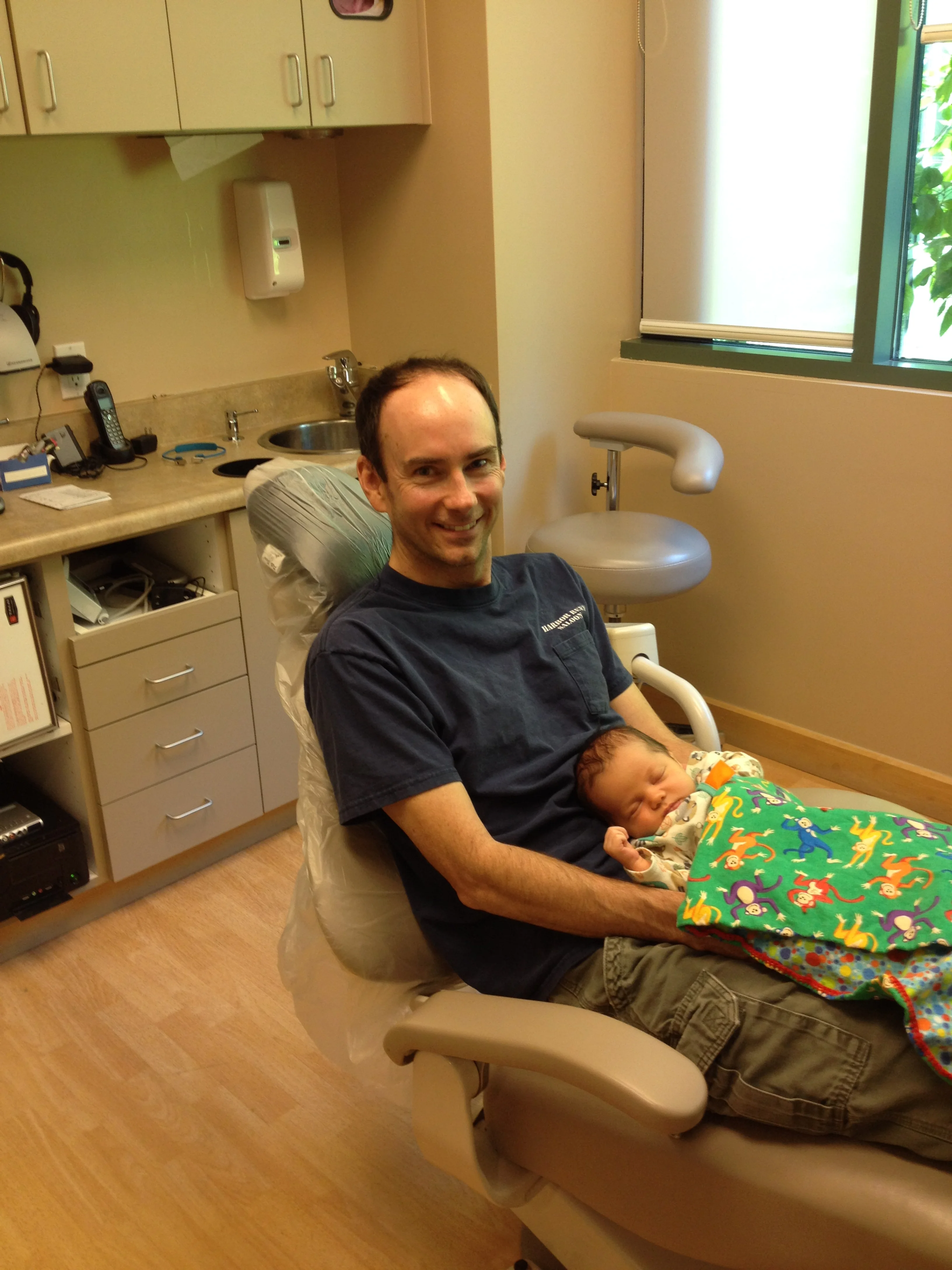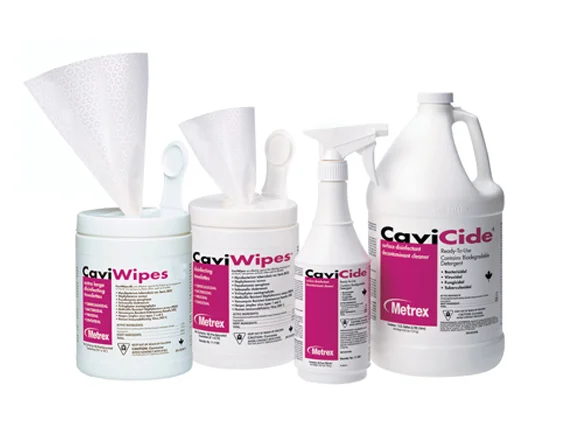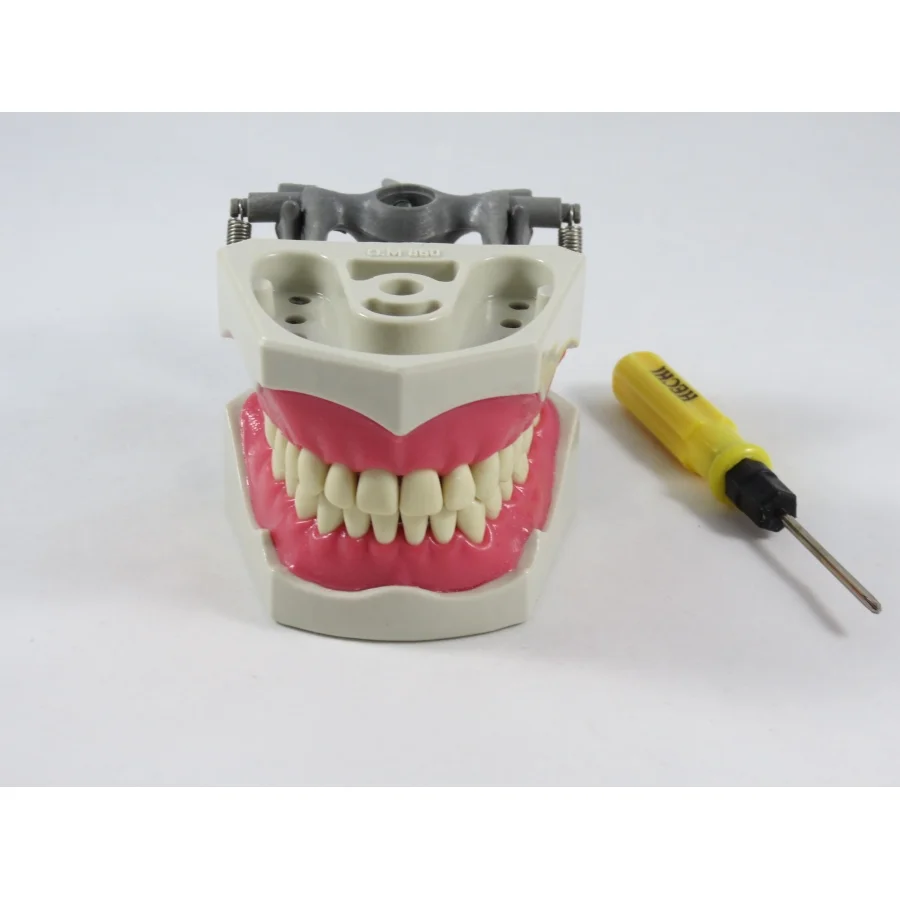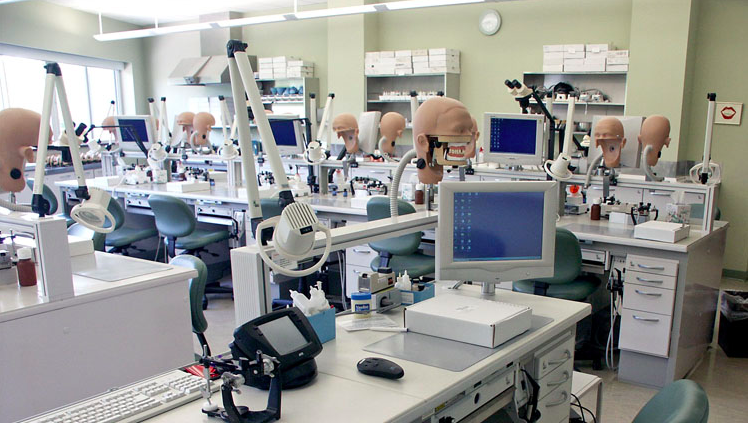This week, Dr. Kari's husband Erik stopped by the office for a cleaning and brought baby Duke along. Dad did great, but as you can see the appointment wore Duke out! We hope you all find some time to spend with your loved ones this weekend. Cherish these moments!
Viewing entries in
around the office
Welcome to The Dental Library Review! In this feature, we will be reviewing and highlighting different children’s books we have collected at our office. Our staff have personally used these books with their own children and have had great reception. Today, we will be going over Clifford’s Loose Tooth, adapted by Wendy Cheyette Lewison (with illustrations by John and Sandrina Kurtz).
In this story, the lovable Clifford loses his first puppy tooth. Initially, he is a little frightened and confused until Emily Elizabeth explains that loose teeth are completely normal. His friends suggest various ways that he can preemptively remove it, but he decides to wait and let it fall out on his own. In the end, his patience is rewarded with a big dog bone from the tooth fairy. It really goes to show that being patient with loose teeth pays off!
We love this story because it reinforces the idea of letting a baby tooth come out on its own. While children will naturally wiggle and play with loose teeth, being overly aggressive with a not-so-loose tooth can end up in pain and injury. This story is a fun way to remind your children that their teeth will come out when they are ready! As with all the stories we review, feel free to check it out at your next appointment. We are always happy to do anything we can to get your family excited and educated about dental health topics!
Did our first president really have wooden teeth?
You may not have a perfect set of pearly whites, but chances are you don’t suffer from as many dental woes as our first President, George Washington. While he never actually had “wooden teeth,” his oral health had a significant impact on his life, political accomplishments and personal image. Our office wanted to take a moment to separate the fact from fiction, and highlight the political importance of President Washington and his dental needs!
In Washington’s time, humanity knew much less about tooth decay, gum disease and how to properly treat and prevent them. As such, many people found themselves with cavities and missing teeth. President Washington was no exception, as historical documents indicate he only had one in-tact natural tooth when he took office. He went through a number of different sets of dentures throughout his life, composed of everything from ivory to bone and even his own previously extracted teeth. It is thought that some of these dentures became quite stained with use, creating an almost “wooden” appearance.
President Washington was very conscientious of his false teeth. The poor fit of his dentures are reflected in some of his later portraits; his face has a collapsed and widened look that is associated with toothlessness and old age. Some scholars even estimate that his poorly fitting (and probably uncomfortable) dentures may have contributed to the infrequency of his public speeches and appearances later in life.
Washington’s story teaches us great lessons on the impact of oral health. Even a man as powerful and historically important as President George Washington was vulnerable to tooth decay and gum disease. Fortunately, today’s dental health care system is better equipped to treat and prevent these conditions before they become a rampant problem. We can only look towards President Washington as a man who best utilized the treatment and technologies available to him.
Dear patients and friends,
On February 4th 2015, Dr. Kari Hong's family grew by one! Baby Duke John Warren was born at 2:18pm, weighing in at 7lbs and 12oz and measuring 21.5 inches in length. We are glad to report both mother and child are happy and healthy. Congratulations Dr. Kari!
As a short reminder, Dr. Kari will remain out of the office until the end of next week (tentatively). However, our hygienists and front office staff will still be holding appointments in the meantime. If you have any questions or dental emergencies, we will still be available to assist you!
Welcome to The Dental Library Review! In this feature, we will be reviewing and highlighting different children’s books we have collected at our office. Our staff have personally used these books with their own children and have had great reception. Today, we will be going over Dear Tooth Fairy by Alan Durant (with illustrations by Vanessa Cabban).
This story follows interactions between Holly, a young girl who lost her first tooth, and the Tooth Fairy. Holly tries to deceive the Tooth Fairy by leaving plastic teeth under her pillow, but only receives a letter of concern in return. As the two exchange writings, Holly learns about the Fairy’s fantastic world. With a fun twist, the book includes all of their communications in separate, removable letters and envelopes. Interactive and Imaginative!
This hard bound book with fun surprises and large illustrations would be a perfect gift for a young girl losing her first tooth. We are sure it will bring your little ones hours of enjoyment with the fun letters from the Tooth Fairy! As with all the stories we review, feel free to check it out at your next appointment. We are always happy to do anything we can to get your family excited and educated about dental health topics!
Welcome to The Dental Library Review! In this feature, we will be reviewing and highlighting different children’s books we have collected at our office. Our staff have personally used these books with their own children and have had great reception. Today, we will be going over The Tooth Book by Dr. Seuss (with illustrations by Joe Mathieu).
Being a classic Dr. Seuss storybook, this tale is full of whimsical rhymes and colorful illustrations; Joe Mathieu does a great job of pairing the fun poetry with equally entertaining imagery. In this early reader, we learn about all the fun places we can find teeth and why they are so important. We also get a short lesson in why we have to take good care of our teeth and what happens to boys and girls who eat too many sweets. Overall, it is a great mix of silly fun and important oral health concepts for small children.
Given the simple wording, thick pages and short storyline, this book is likely best suited for young readers or as a bedtime story. In fact, it is listed as a part of Dr. Seuss’ Bright and Early Board Books. As with all the stories we review, feel free to check it out at your next appointment. We are always happy to do anything we can to get your family excited and educated about dental health topics!
Welcome to The Dental Library Review! In this feature, we will be reviewing and highlighting different children’s books we have collected at our office. Our staff have personally used these books with their own children and have had great reception. Today, we will be going over What If You Had Animal Teeth by Sandra Markle and Howard McWilliam.
This book is a great idea for any child who loves science, biology or animals. Every page covers a different creature, what their teeth look like and what they are used for. Children and adults alike will find these facts interesting and thought provoking. The book also briefly introduces the human teeth, what they do and why it is important to keep them nice and healthy!
Since the book opens with a story about losing the front two teeth, it is most appropriate for children in the 6-7 year range (when the central incisors are typically shed). However, we feel that this book would be fun and interesting for children over a much wider age range. Our only caution is that some of the pictures and illustrations might be alarming to younger children (snakes with fangs showing, children illustrated with animal teeth, etc.).
As with all the stories we review, feel free to check it out at your next appointment. We are always happy to do anything we can to get your family excited and educated about dental health topics!
When choosing a dental or medical office, one of your main concerns is likely sterilization. This very understandable, with the news full of alarming stories and statistics on secondary infections, pathogens and contaminated surfaces found in medical settings. In light of this, Thousand Oaks Family Dentistry is here to show you the basics of our sterilization and disinfection methods, and why we feel they are the best way to keep our patients safe and healthy.
Cavicide comes in wipes and sprays to adapt to a variety of needs.
When entering one of our operatories, you will notice bags, films and coverings over all commonly used surfaces. These disposable barriers ensure that there is no cross contamination between patients: as soon as one procedure is finished, every covering is replaced. Naturally, some surfaces cannot be covered or protected or might become inadvertently contaminated during a procedure. To maintain the cleanliness of these areas, we use a medical grade disinfectant called Cavicide. This incredible solution is strong enough to kill TB, Hepatitis B, HIV and even MRSA, while remaining gentle enough to be approved for use in NICUs. It is a disinfection standard in hospitals, medical offices and dental practices nationwide and we are proud to offer it as a protective measure for our patients.
Beyond our operatories, we take great care in the cleanliness and maintenance of our instruments. All of our instruments are cleaned and sterilized after every single use- with no exceptions. When possible, we also choose to use disposable products to eliminate any possibility of cross-contamination. We feel that this is the most effective way to maximize patient safety.
An example of an autoclave. Note the secure screw-latch on the left side to withstand high pressure.
In general, our sterilization practice runs in two steps. First, instruments are processed through a medical grade instrument washer under high heat. This process takes about an hour and removes debris and dental materials from any fine surfaces. After washing, instruments are then run again in one of our two autoclaves. Autoclaves work by taking a combination of high heat, steam and pressure to completely sterilize whatever is placed inside them. Scientifically speaking, it would be nearly impossible for any pathogenic (disease causing) entity to actually survive these conditions. Our autoclaves are set to meet or exceed all standards mandated by the state and federal government. In proving their efficacy, we run weekly tests to affirm the machine’s abilities to kill even the toughest bacteria.
These steps apply to roughly 90% of the potentially infectious materials we process at our office. For special instruments and tools, we have a variety of other sterilization methods to keep everything (and everyone) safe. In short, we leave nothing to chance when it comes to sterilization and disinfection. If you have any concerns about our office, how we sterilize or why we use the techniques we use, please let us know. We are proud of how we maintain our facility and it’s cleanliness!
A typical practice model used in dental education. It helps simulate the restraints and difficulties of working on a real patient.
Most people outside of the profession can't say they know much about dental education. Of course dentists learn about teeth and the mouth, but what about the rest of the body? How long is dental school? Is there a difference between a D.D.S. and a D.M.D. degree? We compiled a short list of lesser known facts about dental school to separate some of the truths from the rumors! Take a look:
1. Most schools require dental students to dissect a human body from the head and neck to the torso. Some require a whole-body dissection. This includes structures such as the arms, GI tract and heart.
2. Some schools hold courses and seminars on dental research. These are classes specifically geared towards evaluating research papers for clinical application.
3. The average dental student doesn't get to work on an actual patient until they have completed two years of didactic education. Only then are they allowed clinical responsibility.
4. Dental residencies can take from 1-6 years in addition to the four years of dental school. The longest (6 years) is for a joint DDS/MD degree in oral and maxillofacial surgery. That rounds up to 14 years of college education!
The beige tooth was actually hand carved from wax. Students are required to make teeth from wax to learn about the finer points of dental anatomy.
5. Dental students still learn how to hand form teeth from wax. Although this technique is dated, it teaches invaluable lessons on tooth anatomy.
6. There are over 60 dental schools in the United States.
7. Some schools grant D.D.S. degrees and other grant the title of D.M.D. There is absolutely no difference in the responsibilities and privileges between degrees; they are completely equal!
8. Dental residents (post-doctoral students) can be called upon to assist in many hospital duties. Some even provide general anesthesia for surgical cases.
9. There are nine ADA recognized dental specialties/residencies: Endodontics, Dental Public Health, Oral Pathology, Oral Radiology, Orthodontics, Oral Surgery, Pediatric Dentistry, Prosthodontics and Periodontics.
10. Dental education never stops. In order to hold a valid license, a dentist has to take continuing education courses every year.
As you likely already knew, one of the cornerstones of modern medical education is the idea of being a “lifelong learner.” Dentists, physicians, hygienists and nurses all have to meet yearly “continuing education” requirements to hold a valid license and continue providing care. At Thousand Oaks Family Dentistry, we pride ourselves in treating our patients with the most up to date and complete dental knowledge. With this principle in mind, we are proud to announce that Dr. Kari Ann Hong recently completed training at the prestigious Pankey Institute in Miami, Florida.
The Pankey Institute offers world class teaching facilities and laboratories (pankey.org)
The Pankey Institute is a nonprofit organization that prides itself in offering unbiased and research proven dental courses. Their current curriculum spans the entire scope of practice, including esthetics, night guards, and functional shaping of dental restorations. The culmination of their educational program is the Core Diagnosis principle. Here, a series of facial measurements and proportions are used to make better decisions for cosmetic procedures such as orthodontics, crowns/veneers and periodontics. Tooth shape, gum height, and smile size all have a dramatic effect on how we perceive facial esthetics. This system collects all this data to define the safest and most efficient way to develop a beautiful and natural looking smile!
The Core Diagnosis system takes a unique and comprehensive look at facial esthetics.
Dr. Kari started her coursework with the Pankey Institute in 2007 and completed their most up-to-date coursework in October of 2014. She has been proud to utilize their unique and patient focused perspectives for effective dentistry. Beyond many continuing education courses, the Pankey program brings together cosmetics, prevention and patient safety- Ideals we strive for with everyone who visits our office.
If you have any further questions on why we chose the Pankey Institute or any other educational programs we use, please let us know. Our office is here to provide the absolute best service we can. We always strive to use techniques, ideas and products that keep our patients at their healthiest!

























